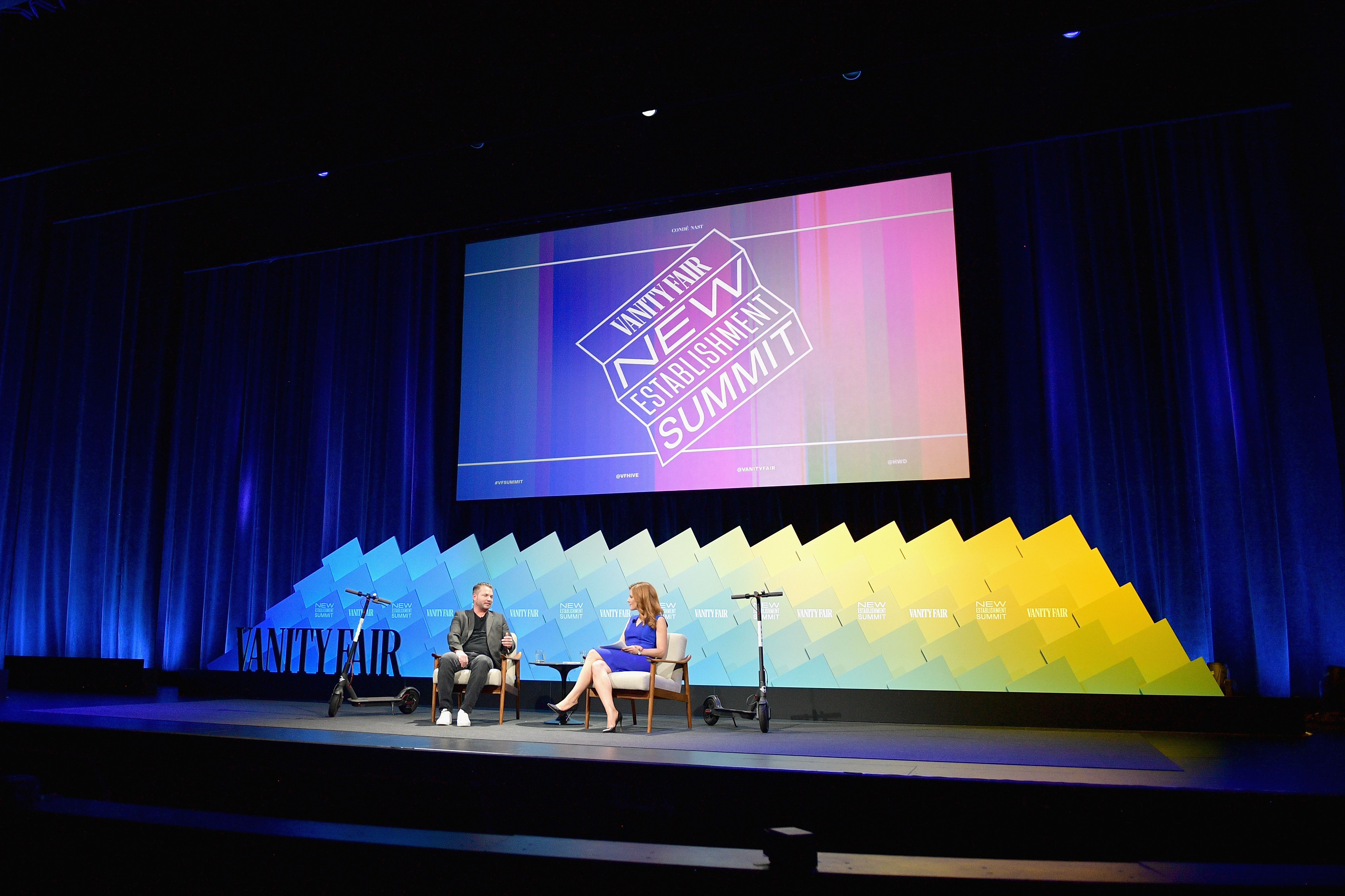If Travis VanderZanden is hellbent on taking over the world, you’d never know it.
Unlike that other Travis—the Uber (and Lyft) veteran’s onetime boss, VanderZanden is happy to note—he’s neither exuberant nor aggressive. The sneaker-clad executive, 39, took to the stage at the Vanity Fair New Establishment Summit on Tuesday by rolling in on one of the black-and-white, dockless electric scooters with which his ascendant startup Bird has become virtually synonymous.
He was quick to a smile, rare to interrupt as CNBC reporter (and Fortune alum) Julia Boorstin pelted him with careful questions. But VanderZanden was deeply guarded, never straying from his message, as he explained the ins and outs of a Southern California business that is thriving on its home turf of Santa Monica (despite a lively legal fight) but banned outright in the city in which he sat at that very moment: Beverly Hills.
“Cities just hadn’t thought about electric scooters at all when they were passing laws,” VanderZanden explained onstage at the Wallis Annenberg Center for the Performing Arts, adding that Bird will deploy them to the streets when there’s nothing on the books that explicitly blocks the practice. “There are very few places that explicitly outlaw e-scooters.” Sure, Beverly Hills bans them. And the most populous city in the U.S., at the state level, also bars them—so Bird has “avoided” New York City, the CEO said. But, he added: “The places where there are no laws, that’s where we go in.”
In May, Bird operated in five cities worldwide. Now, in the second week of October, it counts 100.
What comes first? Bird deploying its scooters, or Bird working to educate cities about the unforeseen service, as it professes to do? “It usually happens at the same time,” VanderZanden said. The audience laughed. The CEO’s eyebrows rose. “We always make sure we have a business license before we go in,” he quickly added, with a grin. “We want to have a dialogue sooner rather than later. If you wait, sometimes it can take too long.”
Whatever its local legality, Bird’s business has unquestionably taken flight. The company has raised more than $400 million from a clutch of starry Silicon Beach and Valley investors—its flock includes names like Accel, Greycroft, Sequoia, Tusk, and Upfront, among others—valuing the company at $2 billion. Perhaps more tellingly, VanderZanden’s former employers have joined the fray. Lyft has deployed its own branded, dockless, electric scooters to Denver and Santa Monica, a clear shot across Bird’s bow. And Uber has deployed scooters branded “Jump” to Santa Monica—kaboom!—as well as made a $335 million investment in Lime, whose verdant scooters and bicycles clog Santa Monica’s palm-lined streets and dozens more across the U.S.
“We were the first in the world to do electric scooter sharing, and we launched a little over a year ago,” VanderZanden said of his deep-pocketed competition. “We’re the furthest along from a supply chain standpoint as well as from a government relations standpoint.”
It’s easy to operate 50 to 100 scooters in a city, he said. It’s far more challenging to scale to 100-plus cities like Bird has. “Operationally, this business turns out to be a lot different than Uber and Lyft,” VanderZanden said. “It’s way more challenging.” You have to move scooters around the city for prime placement, recharge them, and repair them.
Besides, VanderZanden doesn’t subscribe to the view that Uber and Lyft’s existing customer base of millions of people will be as much as a threat as it initially seems. Most people see a scooter on the street, then open its corresponding mobile application, rather than the other way around. The notion of one app to rule them all, “we don’t think it’s actually the way things will evolve,” the CEO said.
VanderZanden added: “Bird is a supply-constrained business.” He’d rather spend equity on more scooters than on stoking more demand.
But Bird’s mission is to replace cars—the low density quality to them, the carbon emissions-spewing nature of them. Forty percent of all car trips in a city are three miles are less; imagine if those rides, save for those necessary to haul kids or groceries, were done by scooter instead. “We fundamentally think it’s a better use of real estate,” VanderZanden said.
Even if some people think there are too many scooters cluttering the sidewalk? Boorstin asked. “What I see is cars everywhere,” VanderZanden countered. “There are a lot more cars. To me, the cars take up a lot more space and create a lot more clutter.”
It sounds like your biggest competitors are Uber and Lyft, Boorstin said.
To which VanderZanden replied: “Our biggest competitors are car trips.” And then he smiled again.
Subscribe to Term Sheet, Fortune’s newsletter about deals and dealmakers.








